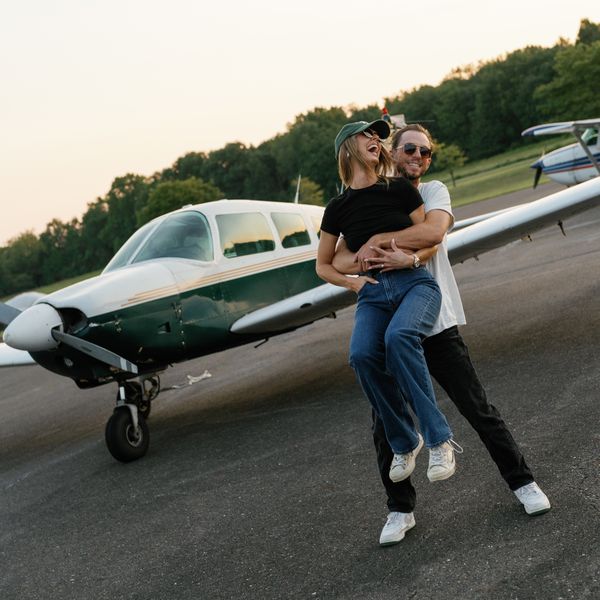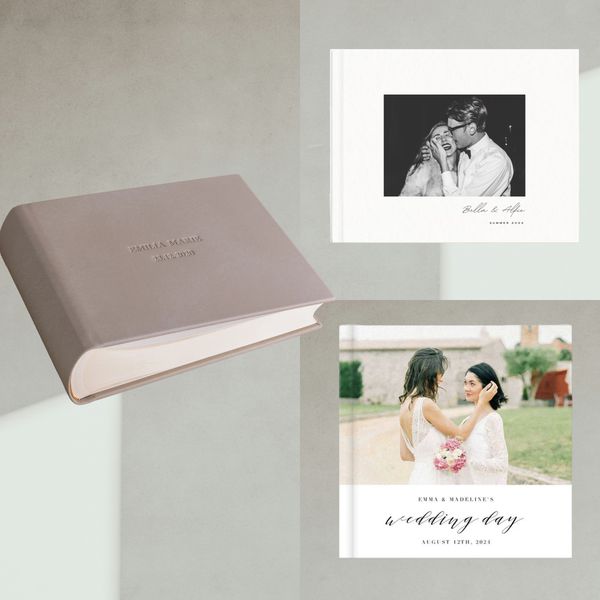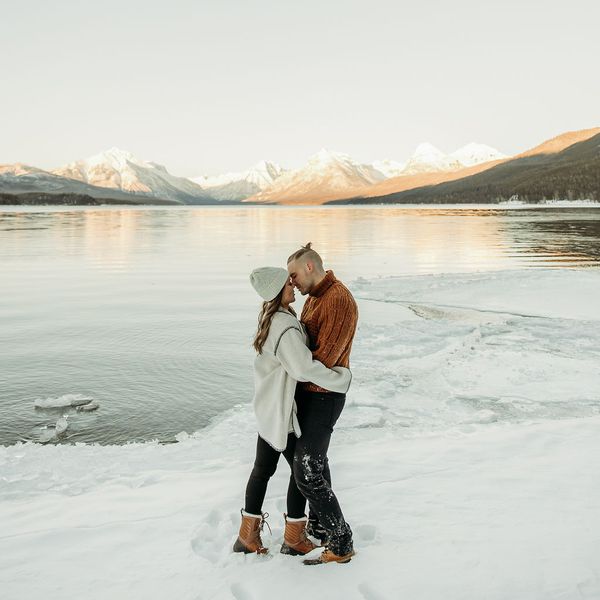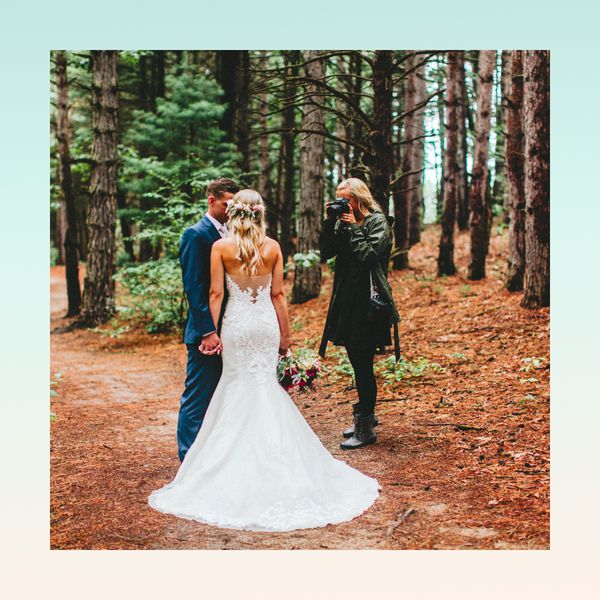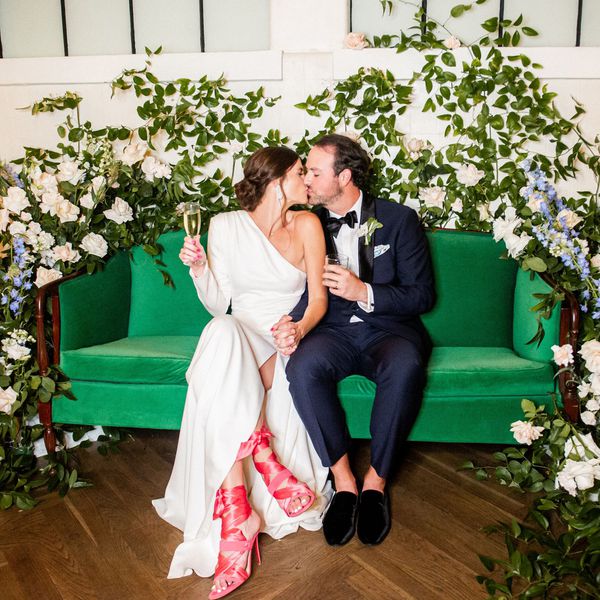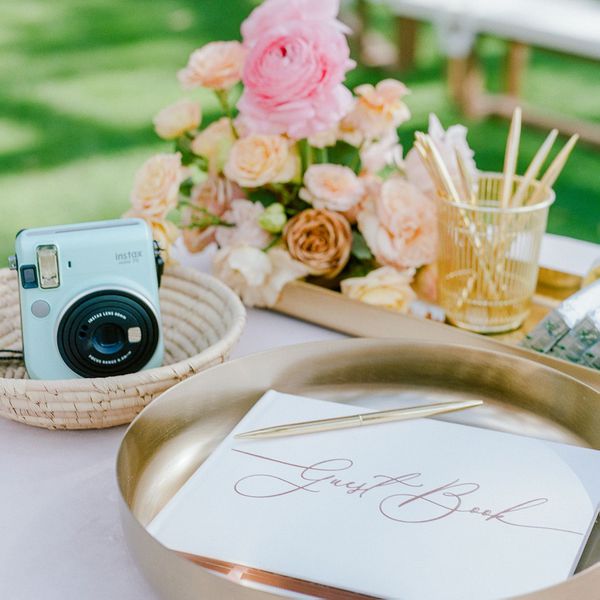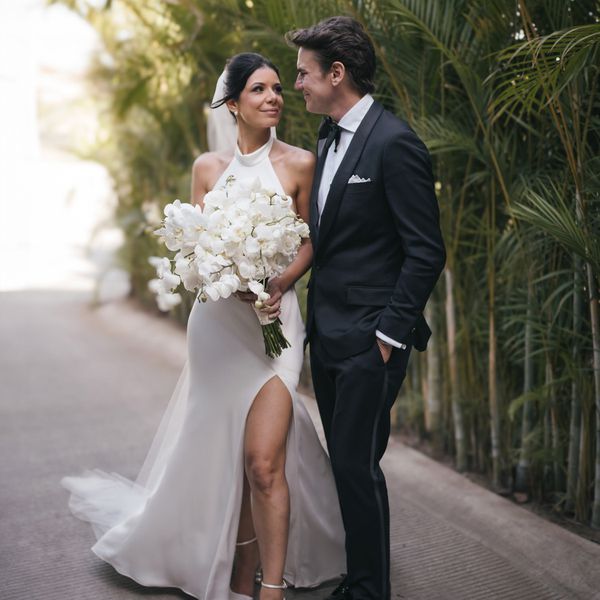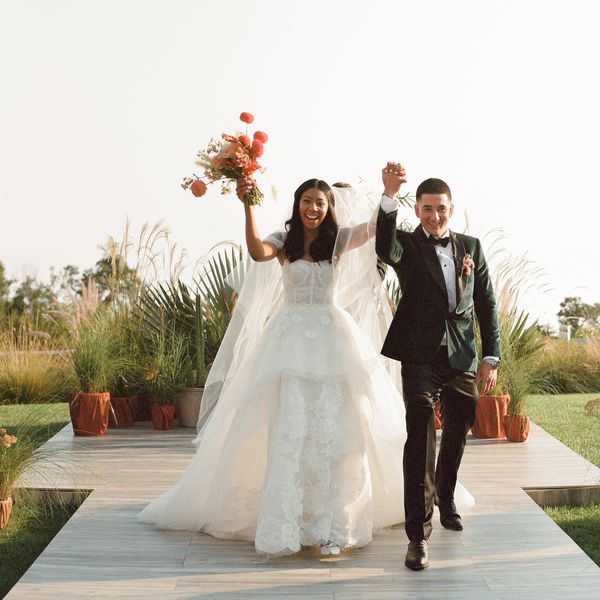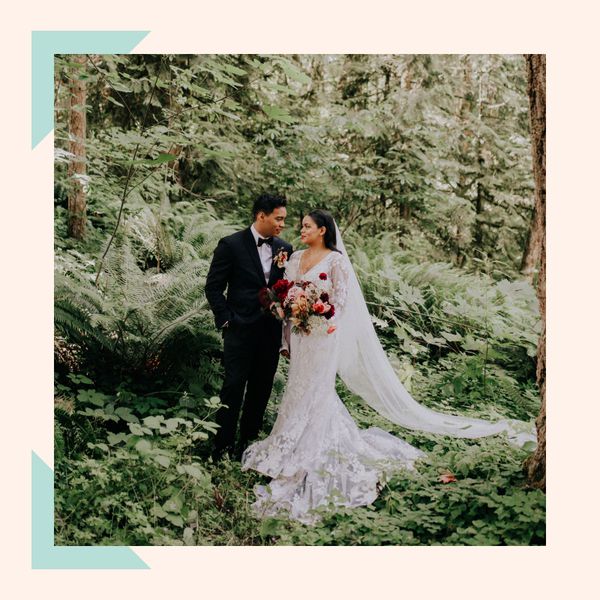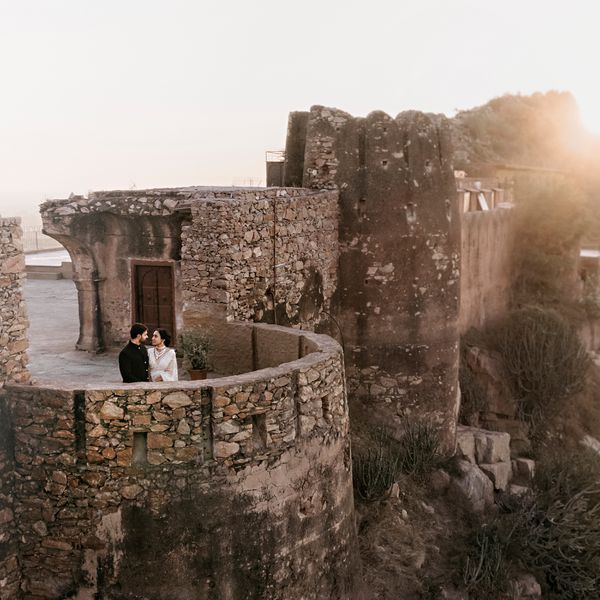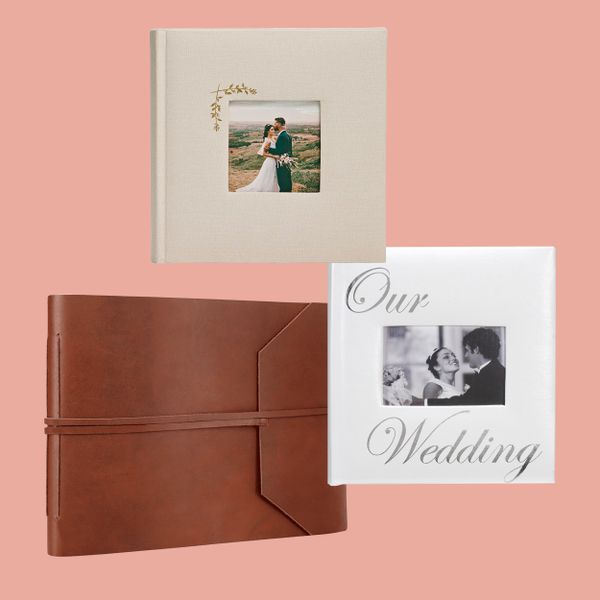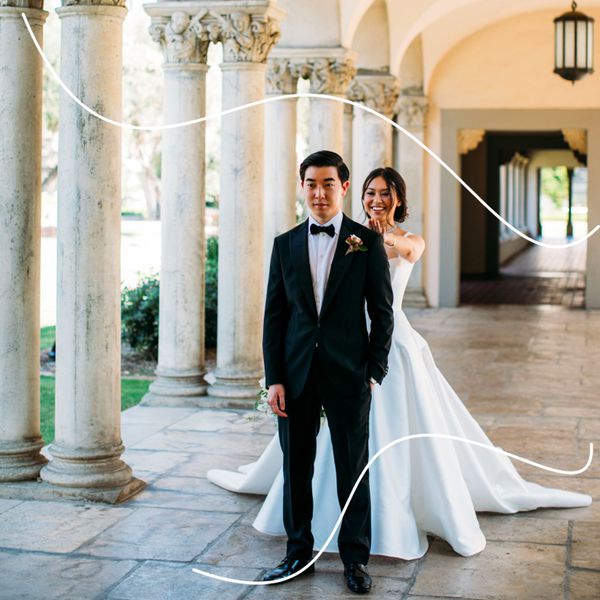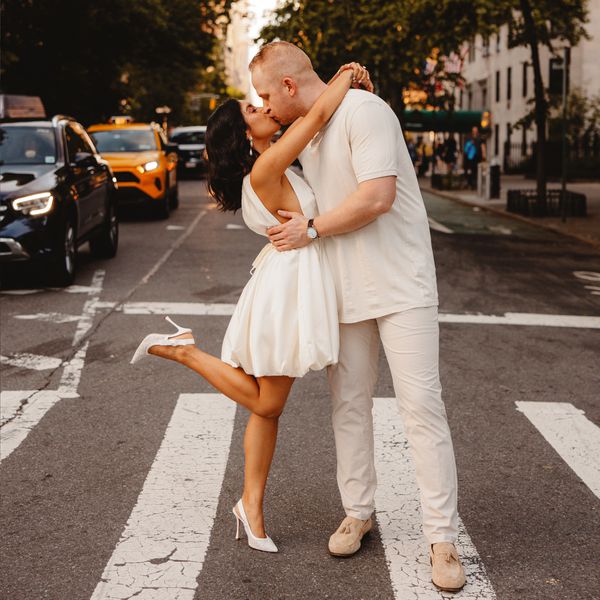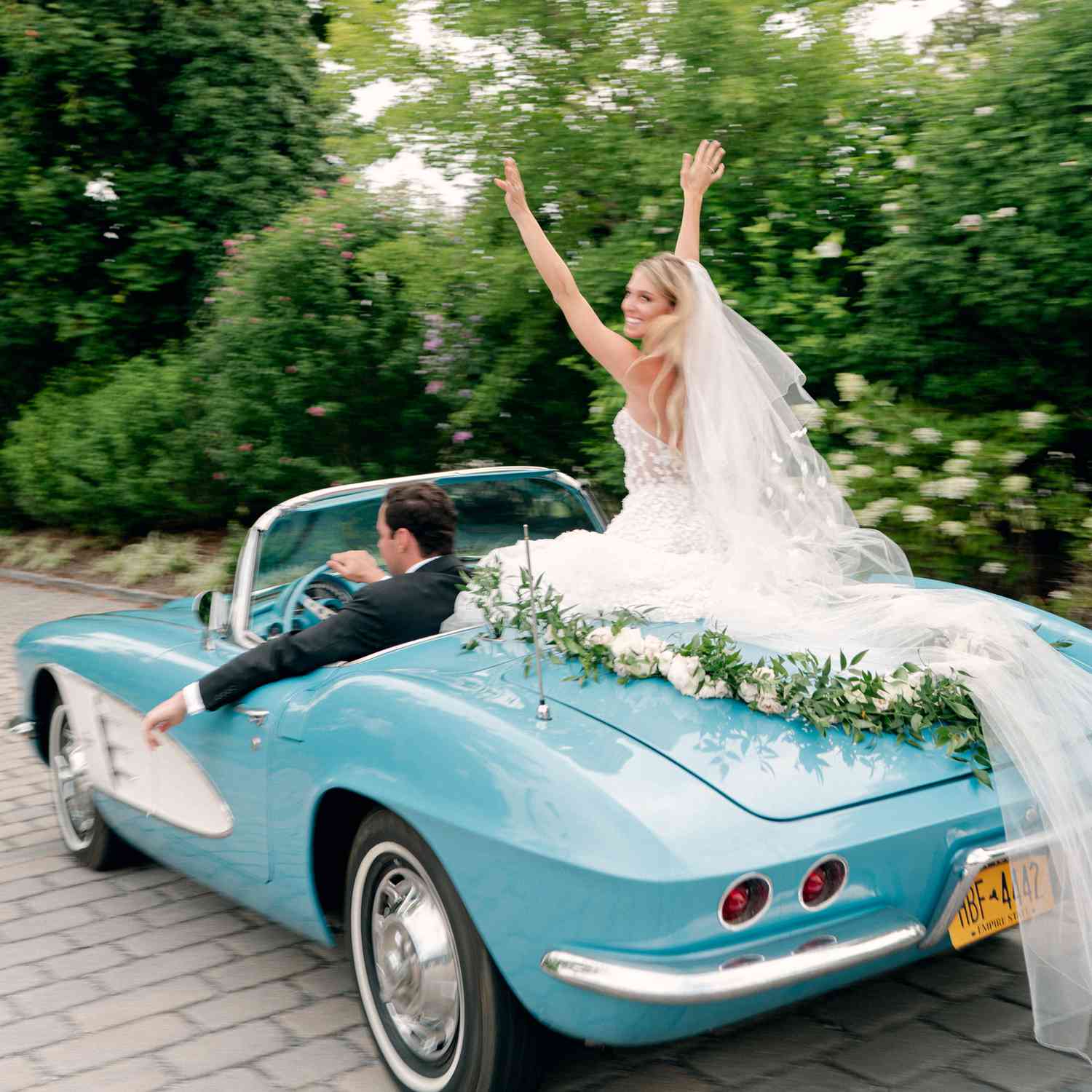
Photo by Abby Jiu Photography
2024 has been the year of blurry wedding photos. What was once considered a photographic error is now a requested stylistic choice by couples—but does it have legs? According to the pros, the answer is yes, so long as it is utilized correctly. To explain what that means, we tapped three of the wedding industry’s top photographers, and they all agreed with this take: “I appreciate blurry wedding photos when they serve a purpose,” says wedding photographer Sacia Matthews. “For example, a blurry image of a still moment (like a flat lay or a still portrait) can feel out of place, but if there’s movement or a sense of action, blur can draw viewers in. It shouldn’t just be a blur for blur’s sake—rather, it should make sense in the context of the moment.”
Context is the buzz world when it comes to blurry wedding photos, which is something photographer Nikki Daskalakis also touches on. When we asked her if she was a fan of the trend, she told us, “Yes, in context. I’m for using the tools in front of me to create the strongest recall of a moment, as artfully as possible.” Soft, fuzzy photography can do just that when the moment is right—but is intentionally requesting this style something couples will appreciate 10, 20, or 50 years down the line? Ahead, we explore how this trend got its start and whether or not it's really here to stay.
How the Blurry Wedding Photo Trend Started
The blurry wedding photo trend is actually far from new: It actually “predates the digital camera," says Matthews. Per Daskalakis, "before digital cameras were as capable as they are today, capturing a sharp image in low light was not easy,” she explains. “Photographers would brace themselves against walls, holding their breath to keep the camera steady, or use a tripod to photograph in low light. Even with all of these efforts, subjects move—because humans are dynamic, unpredictable creatures. The resulting image might be slightly blurred, but it captured a moment of raw emotion and energy that a perfectly sharp photo might have missed.”
According to our experts, the pandemic caused a shift in how people feel about picture-perfect photos. They craved something real, authentic, and emotional after a period of intense disconnect—so it’s no wonder we have shifted away from flawless images. “Before the pandemic, the gold standard was the perfect Instagram moment,” affirms photographer Abby Jiu. “But then we all went through COVID-19 and realized just how important connecting with others was—and people want photos to show that."
Gone are the days of the hyper-curated, ultra-stylized flat lays and perfectly symmetrical portraits. "We no longer want the perfect Instagram—now it's about being real and in the moment, and blurry photos were a way to convey this feeling,” adds Jiu. Daskalakis has another theory: “I think the resurgence of blurry photography is rooted in film nostalgia, and also a response to years of hyper-curation during the influencer era. People are looking for something real—or, at least, something that looks real.”
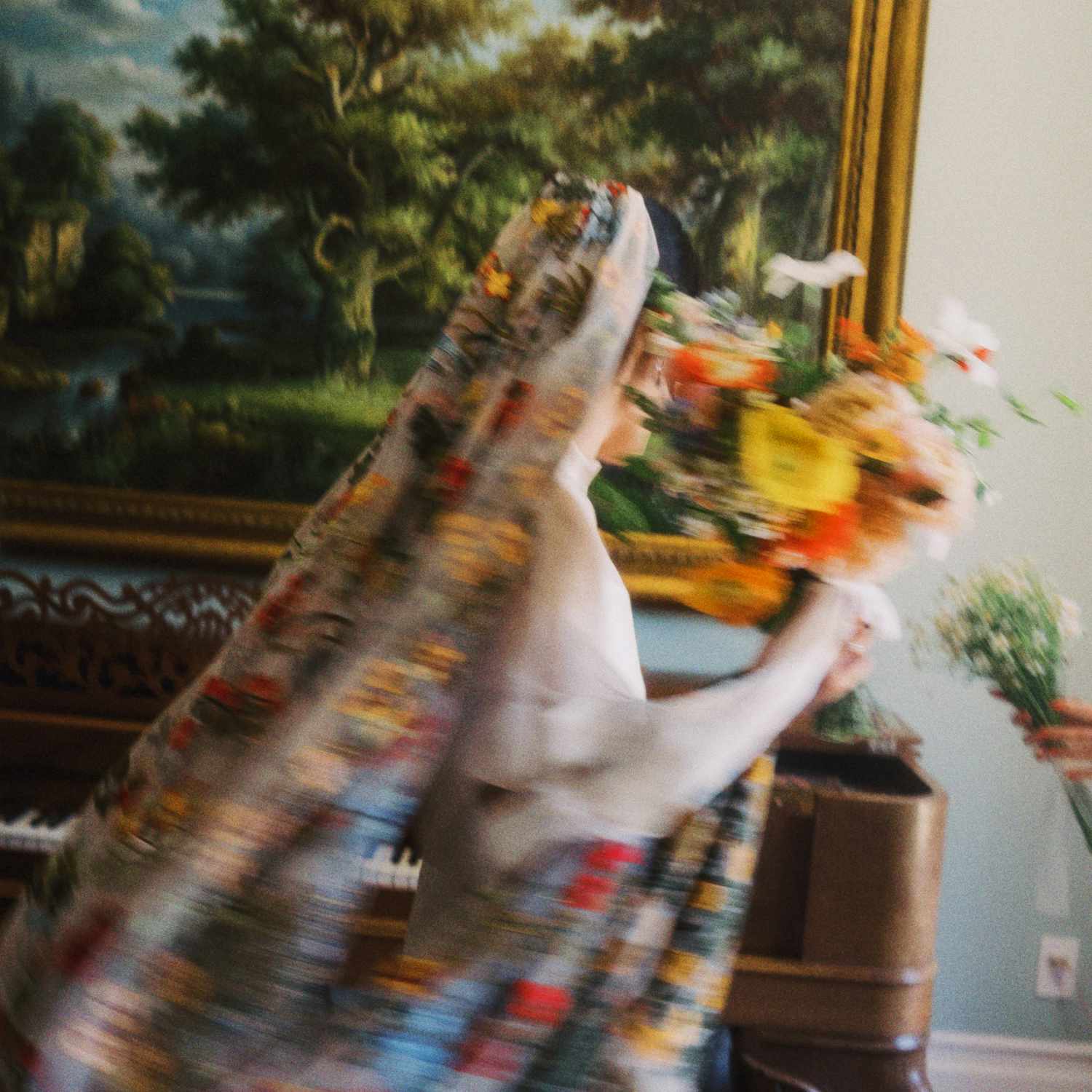
Photo by Daniel Kim Photography
How Blurry Wedding Photos Are Best Utilized
Any professional photographer will tell you that taking a blurry photo for the sake of getting a blurry photo is not time well spent. Instead, they should be reserved for specific and special times throughout your wedding day. “You’re not going to catch me shaking my camera around to create blur for no reason,” notes Daskalakis. “Blur makes the most sense when it ties into its original cause. Low light and film? Things moving quickly? The shot I almost missed? Perfect.”
If you're trying to identify specific moments on your wedding day that you want your photographer to capture in blur, think of times of movement: Your walk down the aisle, the dance floor, guests moving from one space to the next—all of these moments benefit from this trend. “These are instances where blur enhances the energy of the scene,” Matthews tells us. “However, it varies for each client and location. For example, a bustling New York City wedding might lend itself more naturally to blur than an intimate countryside wedding, where using it might feel forced and create unnecessary tension in the image.”
:max_bytes(150000):strip_icc()/blurry-wedding-photos-champagne-tower-nikki-daskalakis-1124-a296e31fffa94a7198e8afc1bfdfa93e.jpg)
Photo by Nikki Daskalakis
How to Request Blurry Wedding Photos From Your Photographer
When communicating your preferences to your photographer, it's best to speak their language. Though this trend has been colloquially coined "blurry wedding photos," the correct term is actually "motion blur." The former (and more popular) term actually refers to an error—a blurry, non-moving image—which is something you probably don't want. “I think when you see a blurry photo of something that is not moving, then it doesn't make sense—something like an invitation suite,” explains Jiu. “We use blur to emote a feeling and draw the viewer to feel like they were there in that moment. Was the car driving off and the bride raised her hands to feel the wind on her face? When I am capturing that image, I want the viewer to feel like they were there.”
All in all, we suggest speaking with your photographer and asking for their thoughts on blurry images. Be clear in your vision, saying you want a natural, “accidental” blur, rather than one that looks fabricated.
:max_bytes(150000):strip_icc()/blurred-wedding-photos-dining-room-still-miracle-1124-7c1d70423e7c4940849a80d624c1f609.jpg)
Photo by Still Miracle
Are Blurry Wedding Photos Just a Fad?
Honestly, it depends on who you ask. "I think it became popular and people want to try it out, but don't have intention behind it. If anything is still, then it shouldn't be blurry," explains Jiu, who thinks requests for blurry shots will fade over time. "But if it’s an intentional photo that has blur in it, those will feel timeless.” All of our sources agree with this sentiment—but Matthews offers a different perspective. “Blurry images are a part of photography’s history, so I see this as more of a revival than a new trend," she says. "For those who execute it well, it may become a signature in their portfolio. For others who force it, it may fade out over time. It’s entirely subjective to each artist and client, so I think we’ll continue to see a mix of approaches in the coming years.”
Since art is, at its core subjective, Daskalakis says she'd never tell a newbie photographer or couple that they are “taking things too far with a trend” like blurry photography. “Being an artist is about experimentation and life is so boring without it. Do I sometimes look at a photo and think ‘That person is trying something new and maybe it didn’t land?’ Yeah. But I love to see some expansion and curiosity. What a timestamp!” she says.
:max_bytes(150000):strip_icc()/16-shabbat-dinner-penn-state-rd-floral-wedding-bride-and-bridesmaids-john-and-joseph-0724-ec707f177749453282ef202f498151ec.jpg)
Photo by John & Joseph
Other Trending Photography Styles You Should Know About
Thanks to the rise of blurry wedding photos, we’ve seen other photography styles emerge as subtrends. From tilted and crooked shots, to intentional minimalism, imperfect film, and direct flash, there are loads of offshoots that we think you’ll like—especially if you appreciate the allure of a soft, blurred image.
:max_bytes(150000):strip_icc()/minimalist-wedding-photography-trend-abby-jiu-photography-1124-4719d8dfa8414e30b0727ac81e833000.jpg)
Photo by Abby Jiu Photography
Minimalism
“A trend I’m seeing is minimalism, with an emphasis on negative space,” Matthews says. “Telling a powerful, honest story through ‘less, not more’ allows the art to breathe, benefiting both the photo and the client. Creating peace in an image, especially in a chaotic world, is likely to resonate with couples moving forward, balancing loud, energetic moments with quiet, emotional ones.”
:max_bytes(150000):strip_icc()/27-no-flower-reception-virginia-wedding-couple-portrait-keila-bottiglieri-abby-jiu-photography-0924-5a609a4b0a9b423f81ef987d41bcbced.jpg)
Tilted and Crooked Shots
Daskalakis has noticed an uptick in tilted and crooked shots. “There’s a time and place for them and they make the most sense when a photographer doesn’t have the time to frame something up perfectly (see: the shot you weren’t ready to take, or a wild moment on the dance floor).” Seeing as how blurry wedding photos are meant to be “accidental,” it makes sense that tilted and crooked shots are now on photographers' and couples' radars, too.
:max_bytes(150000):strip_icc()/11-tomato-girl-summer-virginia-wedding-bride-portrait-abby-jiu-photography-0824-f7d91fe1276a4619a116ec867eb5b22f.jpg)
Photo by Abby Jiu Photography
Direct Flash and Imperfect Film
The same can be said for direct flash and imperfect film. “Direct flash is a trend we’ve seen make a strong comeback in the last few years,” explains Daskalakis. “Think dark background and punchy subjects, frozen in time. We’ve seen a lot of imperfect film reemerge as well (35mm, underexposed, blurry, etc.).” The common thread connecting all these subtrends? Finding beauty in the imperfect, in the letting go. Daskalakis, however, puts it best: "It’s kind of funny, though—in our longing for imperfection, are we now curating that, too?”
